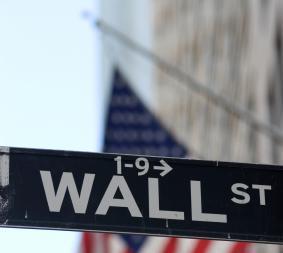The collapse of world famous financial institutions, supposedly experts in risk taking, has revealed serious problems with the way markets operate. But what does it mean for risk managers?
This week the financial crisis dipped to a new low, it claimed fresh victims and saw dramatic government intervention to help shore up confidence in the markets.
Even though the markets are looking a little less scary now a dark cloud still hangs over the world economy.
While the collapse of some of the most sophisticated financial institutions in the world, and the forced rescue of others, begs some serious questions about the validity of the free market system.
Has risk management failed in its ultimate goal of preventing corporate disaster? And how was it that some organisations were allowed to accumulate liabilities which turned out in the end to be venomous?
One avenue of inquiry is that organisational culture was ultimately at fault. When the markets were roaring banks happily took risks. Traders were the ones who made the profits while the CRO handled the risks.
This ‘outsourcing’ of responsibility probably contributed to a dangerous situation whereby the rest of the organisation relaxed, safe in the knowledge that risks were being managed—just by someone else.
Another observation is that risk managers were ignored.
The New York Times paints a gloomy picture of an executive team at Fannie Mae and Freddie Mac that took unacceptable risks despite warnings from the CRO and others.
According to the paper, Freddie Mac’s CRO, David Andrukonis, sent the chief executive Richard Syron a memo warning him that the firm was financing questionable loans that threatened the firm’s financial health.
Andrukonis recalled telling Syron in mid 2004 that the company was buying bad loans that ‘would likely pose an enormous financial and reputational risk to the company and country’, said the New York City daily.
It sounds a lot like passing the buck, but there are also clearly problems with regulating the complex world of financial services.
But is the crisis a result of under regulation or over regulation? There are arguments on both sides.
Problems built up with rules that allowed investment banks to package debt and sell it on without anyone really knowing where the risks were going. It turned out that a lot of this debt accumulated in one place.
“Even though the markets are looking a little less scary now, a dark cloud still hangs over the world economy.
The flag was raised too late for AIG which was forced in the final hour to ask the government for a massive bail out. AIG proved that its AAA rating was basically worthless.
It is apparent that the sector cannot be allowed to regulate itself, said a British trade union, frustrated at thousands of job cuts in the City.
Predictably, some of the banks themselves blame overly prescriptive legislation. Basel II said that they should assign capital based on the level of risk they were assuming.
That meant rather than holding on to stable long term debt, which required a big capital cushion, several banks took on short term debt, like subprime mortgages, which required them to hold onto less capital as a precaution. When the subprime debt turned out to be toxic some of these banks were left undercapitalised.
Inevitably, more, not less, regulation seems to be what’s in store for the sector.
The US government has ringfenced bad debt in the American financial system by nationalising two of the biggest mortgage lenders, as well as the world’s biggest insurer, and funded a $700bn scheme to buy toxic assets.
Taxpayers will expect some accountability after handing over all that cash.
Once the deep issues underlying this credit crisis are exposed, there will be calls for more stringent regulation.
It’s worth remembering that the Securities and Exchange Commission, America’s securities regulator, was established in the wake of the 1930s crash.
On the other side of the Atlantic, Britain’s financial services watchdog has already said it will crack down on pay package deals that reward ‘irresponsible’ risk taking.
In light of the recent turmoil in the financial markets, risk managers are reevaluating their risks and exposures. While government intervention has provided some relief to the risk community, uncertainty of the long term impact still exists.
This is a challenging time for risk managers, but one good thing is that their role has become even more relevant. Companies need a better understanding of the risks that they are facing, not just more risk data. Risk managers should be prepared to present that information to the boardroom.




















No comments yet